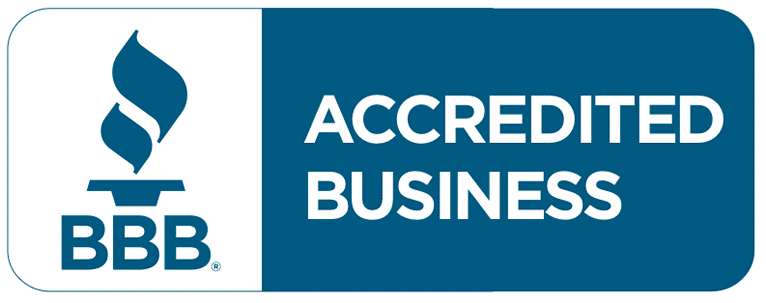If you’ve ever wondered how to lubricate a garage door to keep it running smoothly and extend its life, you’ve come to the right place. A well-lubricated garage door not only functions better but also helps prevent costly repairs down the line.
Proper lubrication is essential for maintaining your garage door’s functionality and longevity. It minimizes friction, reduces wear and tear, and ensures all moving parts work efficiently. Your garage door can become noisy, sluggish, and prone to damage without regular lubrication.
In this comprehensive guide, we’ll take you through all the essential steps and provide valuable tips to ensure your garage door operates seamlessly for years to come. You’ll learn which parts of the door need lubrication, what types of lubricants to use, and how often to perform this maintenance task. Whether you’re a seasoned DIY enthusiast or new to garage door maintenance, this guide is your one-stop resource for keeping your garage door in top shape.
Importance of Lubricating Your Garage Door
Lubricating your garage door is a critical aspect of home maintenance that ensures the smooth and efficient operation of your door. Garage doors have numerous moving parts, including rollers, hinges, tracks, and springs, which all require regular lubrication to function correctly. Without proper lubrication, these components can grind against each other, causing friction and wear that lead to malfunctions and potentially costly repairs.
Benefits
- Reduced Noise: One of the most noticeable benefits of lubricating your garage door is the reduction in noise. Over time, the metal parts of your garage door can create squeaks and groans due to friction. Lubrication reduces this friction, resulting in a quieter operation. This is especially beneficial if your garage is attached to your home and the noise disrupts your living space.
- Increased Lifespan: Regular lubrication can significantly extend the lifespan of your garage door and its components. By minimizing friction, lubrication prevents the parts from wearing out prematurely. This means that components like the rollers, hinges, and springs will last longer, saving you from frequent replacements and repairs.
- Improved Performance: A properly lubricated garage door operates more smoothly and efficiently. This can make it easier to open and close the door, whether manually or using an automatic opener. Improved performance not only makes your garage door more convenient to use but also reduces the strain on the door opener, preventing it from overworking and potentially failing.
Common Issues from Neglecting Lubrication
Neglecting to lubricate your garage door can lead to several problems, including:
- Increased Noise: Without regular lubrication, the metal parts of your garage door can become noisy. Squeaking, grinding, and rattling sounds are common complaints when lubrication is neglected. These noises are not just an annoyance but also a sign that parts are wearing out due to friction.
- Accelerated Wear and Tear: The moving parts of a garage door, such as rollers, hinges, and springs, are subject to significant wear and tear. Without lubrication, the friction between these parts increases, causing them to wear out faster. This accelerated wear can lead to parts breaking down more quickly, necessitating frequent repairs or replacements.
- Operational Problems: A lack of lubrication can cause your garage door to operate less smoothly. You might notice that the door sticks, jerks, or moves unevenly when opening or closing. These operational issues can be frustrating and, in some cases, dangerous if the door becomes stuck or falls unexpectedly.
- Increased Repair Costs: When parts wear out due to lack of lubrication, the cost of repairs can add up quickly. Replacing worn-out rollers, hinges, or springs can be expensive. Additionally, if these parts fail, they can cause damage to other components, leading to even higher repair costs.
Understanding how to lubricate a garage door and doing it regularly can prevent these issues. Proper lubrication involves applying the right type of lubricant to all the moving parts, ensuring they operate smoothly and last longer. Regular maintenance, including lubrication, is a simple and cost-effective way to keep your garage door in optimal condition and avoid the inconvenience and expense of major repairs.
Tools and Materials Needed
List of Tools
When preparing to lubricate a garage door, gather the following tools and materials:
- Lubricants: Silicone spray, lithium grease, or garage door lubricant.
- Cloths: Clean rags or cloths for wiping down parts.
- Wrenches: Various sizes are used to tighten any loose nuts or bolts.
- Screwdrivers: Both flat-head and Phillips for different screws.
- Ladder: A sturdy ladder to reach high parts of the garage door mechanism.
- Brush: A small brush to clean off debris and dirt.
Types of Lubricants
Choosing the right lubricant is crucial for the proper maintenance of your garage door. Here are the most commonly used types:
- Silicone Spray: Ideal for plastic parts and nylon rollers. It provides a smooth, non-greasy finish.
- Lithium Grease: Perfect for metal parts and hinges. It is thicker and more durable, providing long-lasting lubrication.
- Garage Door Lubricant: Specifically designed for garage doors, this lubricant can be used on all moving parts to ensure smooth operation.
Safety Gear
Safety is important when working on any mechanical project. Here’s the recommended safety gear:
- Gloves: Protect your hands from sharp edges and chemical exposure.
- Safety Glasses: Prevent debris and lubricant from getting into your eyes.
- Dust Mask: Protect your lungs from dust and debris when cleaning the garage door.
- Work Clothes: Wear clothes that you don’t mind getting dirty or stained.
Gather these tools and materials to ensure a smooth and safe process when learning how to lubricate a garage door. Proper preparation will make the task more efficient and effective.
Step-by-Step Guide on How to Lubricate a Garage Door
1. Preparation
A. Inspection
- Visual Check: Begin by visually inspecting all the components of your garage door. Look at the hinges, rollers, springs, and tracks.
- Signs of Wear: Look for signs of wear and tear, such as rust, bends, cracks, or other damages. Pay special attention to the rollers and hinges, as they are crucial for smooth operation.
- Listen and Observe: Operate the garage door and listen for any unusual sounds like grinding or squeaking. Notice any jerky movements or areas where the door seems to struggle.
B. Cleaning
- Remove Debris: Use a cloth to wipe down all the moving parts of the garage door. This includes the hinges, rollers, springs, and tracks. Dirt and debris can cause friction and wear down the components.
- Brush Away Grime: For stubborn dirt, use a small brush to clean hard-to-reach areas. This will ensure that the lubricant can adhere properly to the parts.
- Dry Surfaces: Make sure all parts are dry before applying lubricant. Moisture can dilute the lubricant and reduce its effectiveness.
2. Lubrication
A. Hinges
- Apply Lubricant: Spray lubricant directly onto the pivot points of each hinge. These points are where the hinges rotate and are prone to friction.
- Work It In: Move the door up and down several times to allow the lubricant to penetrate the hinges. This helps to reduce noise and ensure smooth operation.
- Check for Smoothness: Ensure the hinges move freely without resistance. Reapply lubricant if necessary.
B. Rollers
- Lubricate the Bearings: Spray lubricant on the rollers, focusing on the area around the bearings. This is where most of the friction occurs.
- Roller Material: Use silicone spray for nylon rollers to prevent damage. For metal rollers, lithium grease is more effective.
- Distribute Evenly: Operate the door several times to distribute the lubricant evenly along the rollers. Check for smooth and quiet operation.
C. Springs
- Torsion Springs: For torsion springs, apply lubricant along the entire length of the spring. Be careful not to apply too much to avoid dripping.
- Extension Springs: Spray lubricant along the coils of extension springs. Ensure you cover the entire surface of the springs.
- Test the Door: Open and close the door a few times to work the lubricant into the springs. This will reduce noise and make the door easier to operate.
D. Tracks
- Clean First: Make sure the tracks are clean before applying lubricant. Use a cloth to wipe away any dirt or debris.
- Apply Lubricant: Apply a thin layer of lubricant to the inside of the tracks. Avoid using too much as it can attract dirt.
- Ensure Smooth Movement: Open and close the door to spread the lubricant along the tracks. This ensures that the door moves smoothly without sticking.
E. Locks
- Lubricate the Mechanism: Spray a small amount of lubricant into the keyhole and around the lock. This keeps the lock functioning smoothly.
- Work the Lock: Turn the lock several times to ensure the lubricant is distributed throughout the mechanism.
- Prevent Jamming: Regular lubrication prevents the lock from jamming and ensures it operates smoothly.
3. Final Checks
- Operate the Door: After lubricating all parts, operate the garage door a few times. Listen for any unusual sounds and observe the door’s movement.
- Even Distribution: Check each component to ensure the lubricant has been evenly distributed. Reapply if any parts seem dry.
- Remove Excess: Wipe away any excess lubricant to prevent dirt buildup. Excess lubricant can attract dust and debris, which can cause friction and wear.
Following these detailed steps will teach you how to lubricate a garage door effectively. Regular maintenance with the appropriate tools and lubricants will keep your new garage door operating smoothly and extend its lifespan.
Maintenance Tips to Extend the Life of Your Garage Door
Regular Inspections
Frequency
- Routine Checks: Conduct a thorough inspection of your garage door every three to six months to catch potential issues early.
- High-Usage Doors: If your garage door is used frequently, consider monthly inspections to ensure all parts are functioning properly.
Areas to Inspect
- Hinges and Rollers: Look for signs of wear and tear such as rust, cracks, or bends. Ensure they move smoothly without any resistance.
- Springs: Check both torsion and extension springs for signs of stretching, rust, or any visible damage. Springs under high tension can be dangerous, so any issues should be addressed promptly.
- Tracks: Ensure the tracks are aligned correctly and free of debris. Misaligned or dirty tracks can cause the door to operate unevenly or become stuck.
- Cables and Pulleys: Inspect for fraying, rust, or any signs of wear. Damaged cables and pulleys can lead to more significant problems if not replaced.
- Door Balance: Test the balance by disconnecting the opener and manually lifting the door halfway. If it stays in place, it’s balanced correctly. If it moves up or down, the balance needs adjustment, which is often best handled by a professional.
Seasonal Maintenance
Adjusting Lubrication Based on Seasonal Changes
- Winter Maintenance
- Lubrication: Cold temperatures can cause metal parts to contract, leading to increased friction and noise. Apply a cold-weather lubricant to all moving parts, including hinges, rollers, and springs, to keep them operating smoothly.
- Weather Stripping: Inspect and replace weather stripping to prevent cold air from entering and causing the door to freeze.
- Summer Maintenance
- Heat Effects: High temperatures can cause lubricants to thin out and metal parts to expand. Check and reapply lubricant to maintain proper thickness and prevent parts from seizing.
- Track Cleaning: Clean the tracks more frequently to remove dust and debris that can accumulate during dry, hot weather.
- Heat Effects: High temperatures can cause lubricants to thin out and metal parts to expand. Check and reapply lubricant to maintain proper thickness and prevent parts from seizing.
- Rainy Season Maintenance
- Rust Prevention: Moisture can accelerate rust and corrosion. Apply a water-resistant lubricant to protect metal parts from moisture.
- Seal Checks: Ensure that all seals are intact and replace any that are worn out to prevent water from seeping into the garage.
- Rust Prevention: Moisture can accelerate rust and corrosion. Apply a water-resistant lubricant to protect metal parts from moisture.
Additional Seasonal Tips
- Weather Seals: Check and replace worn weather seals around the garage door to keep out drafts and moisture, which can affect the door’s performance and longevity.
- Lubricant Type: Use lubricants specifically designed to withstand extreme temperatures and weather conditions to ensure consistent performance throughout the year.
Professional Servicing
When to Call a Professional for Maintenance
- Complex Repairs: If you identify significant wear or damage to critical components like springs, cables, or pulleys, it’s essential to call a professional. These parts are under high tension and can be dangerous to handle without the proper tools and expertise.
- Door Balance Issues: If your door isn’t balanced correctly and manual adjustments aren’t successful, a professional can safely recalibrate it. An unbalanced door can strain the opener and other components, leading to more significant problems.
- Annual Tune-Ups: Schedule an annual professional inspection and tune-up. A professional can thoroughly inspect, adjust, and lubricate all parts, ensuring your garage door system is in optimal condition. They can also address any potential issues before they become major problems.
Regular inspections, seasonal adjustments, and timely professional servicing are crucial steps to extend the lifespan of your garage door and keep it operating smoothly year-round.
Frequently Asked Questions
How often should I lubricate my garage door?
You should lubricate your garage door every six months. If you use the door frequently, consider lubricating it every three months to ensure smooth operation and prevent wear and tear on the components.
What type of lubricant should I use for my garage door?
Use a silicone spray or lithium-based grease to lubricate your garage door. Silicone spray is ideal for plastic parts and nylon rollers, while lithium-based grease works well for metal components. Both types provide long-lasting lubrication and help reduce friction.
Can I use WD-40 on my garage door?
No, you should not use WD-40 to lubricate your garage door. WD-40 is a degreaser and not a true lubricant. It can temporarily reduce noise but will not provide long-term lubrication. Instead, use a silicone spray or lithium-based grease specifically designed for garage doors.
Can lubrication fix all garage door issues?
Lubrication can address many minor issues related to noise and smooth operation. However, if your garage door has significant problems, such as broken springs or misalignment, professional repair may be necessary.
What if my garage door still makes noise after lubrication?
If the door continues to make noise after lubrication, inspect it for other issues, such as loose hardware, worn-out parts, or balance problems. If the noise persists, consult a professional.
Conclusion
Properly lubricating your garage door is essential for maintaining its smooth operation and extending the lifespan of its components.
Regular maintenance is crucial. By consistently lubricating your garage door, you ensure it operates smoothly and quietly, preventing unnecessary wear and tear. Keeping up with this simple routine not only extends the life of your garage door but also reduces the likelihood of costly repairs.
Ensure you inspect the door periodically for any signs of wear or damage that lubrication alone cannot fix. If you encounter any major issues, consider consulting a professional for repairs. Regular maintenance, combined with proper lubrication, will keep your garage door in top shape for years to come.
End Note
When it comes to maintaining and servicing your garage door, trust Veterans Garage Door, your go-to experts for comprehensive garage door services in Citrus, Manatee, Sumter, Sarasota, and Lake County. Whether you’re learning how to lubricate a garage door or need professional assistance, we are committed to delivering exceptional service.
Our team offers expert installation, reliable maintenance, and prompt garage door repairs to ensure your garage door operates smoothly. We pride ourselves on the quality of our work and invite you to explore our Garage Door Services and Gallery pages to see our dedication in action.
Veterans Garage Door serves multiple locations, and you can check if we operate in your neighborhood by visiting our Service Areas page. Our mission is rooted in strong values and a dedication to customer satisfaction. Learn more about our commitment by visiting our About Us page.
Follow our blog to stay updated with the latest tips, trends, and maintenance insights. Connect with us on Facebook for real-time updates, customer reviews, and engaging content. For all your garage door needs, Veterans Garage Door is the perfect solution. Visit our Contact Us page to reach out today and experience the difference. Your satisfaction is our top priority—contact us today and let us exceed your expectations.
















